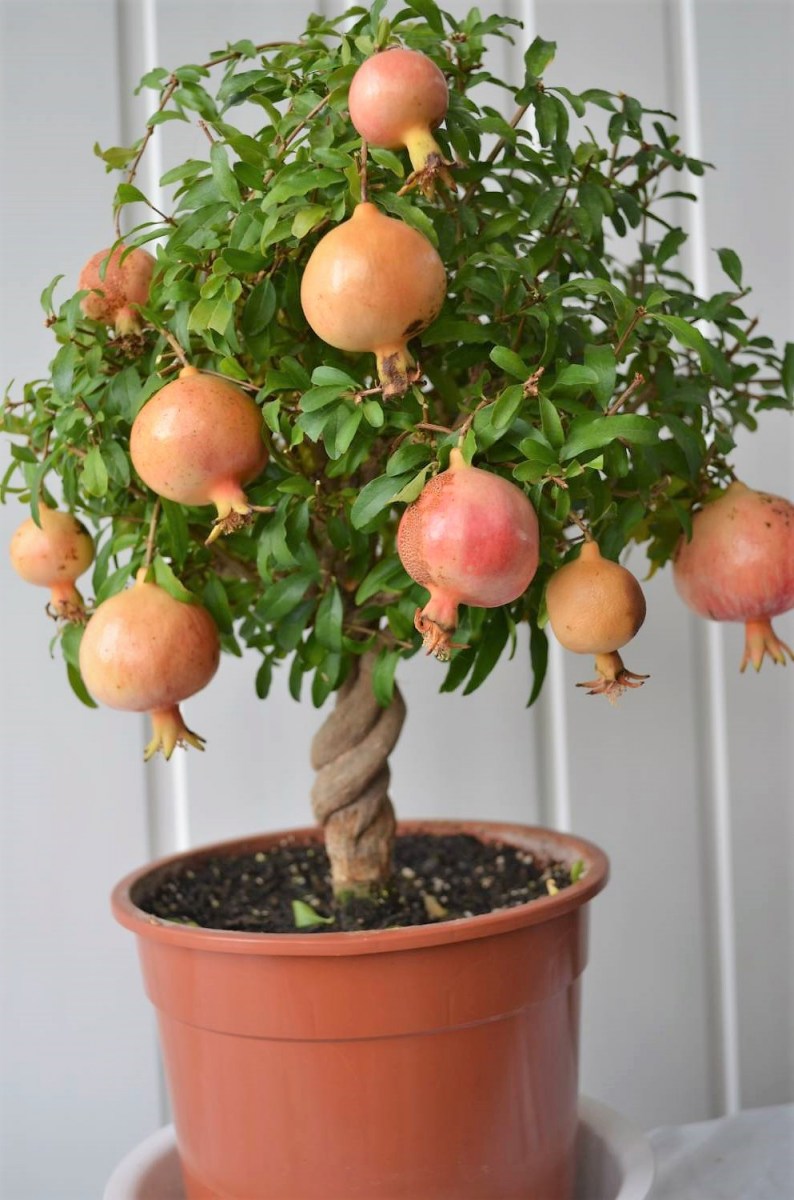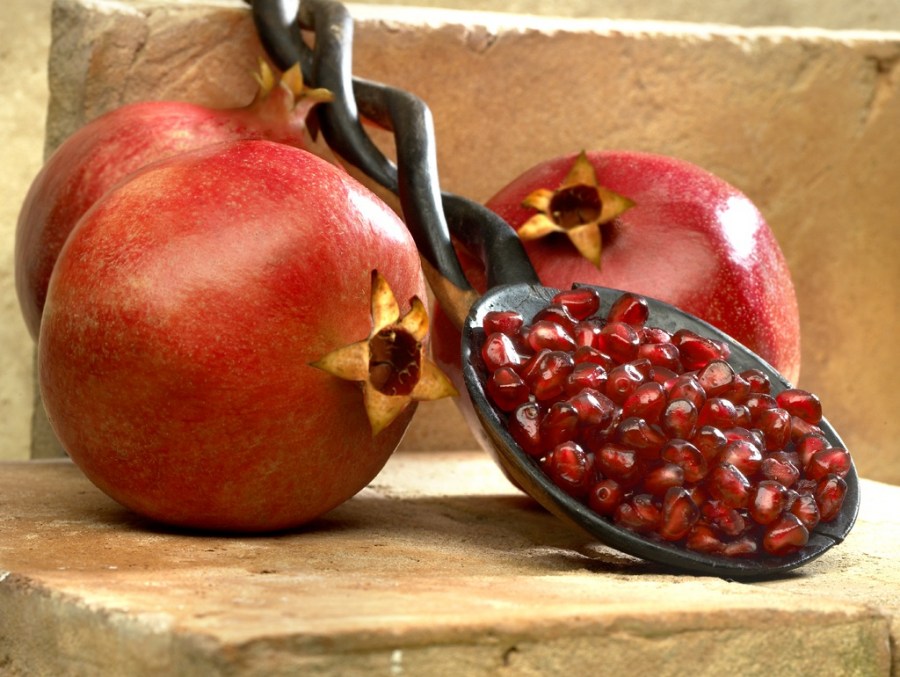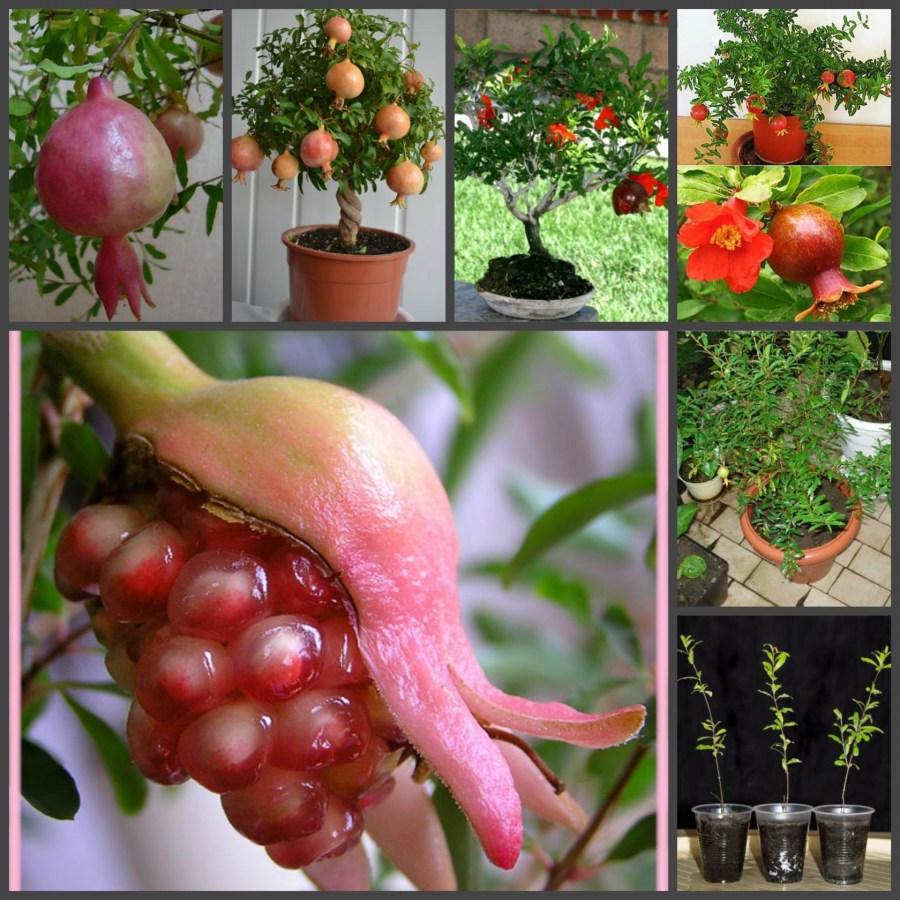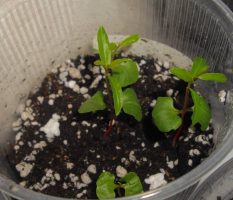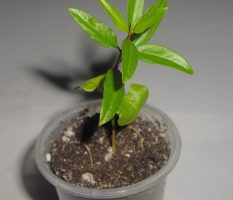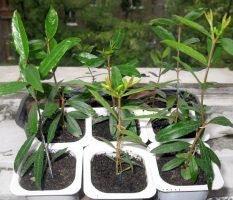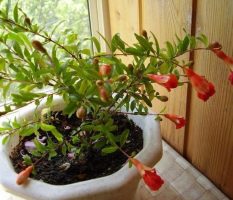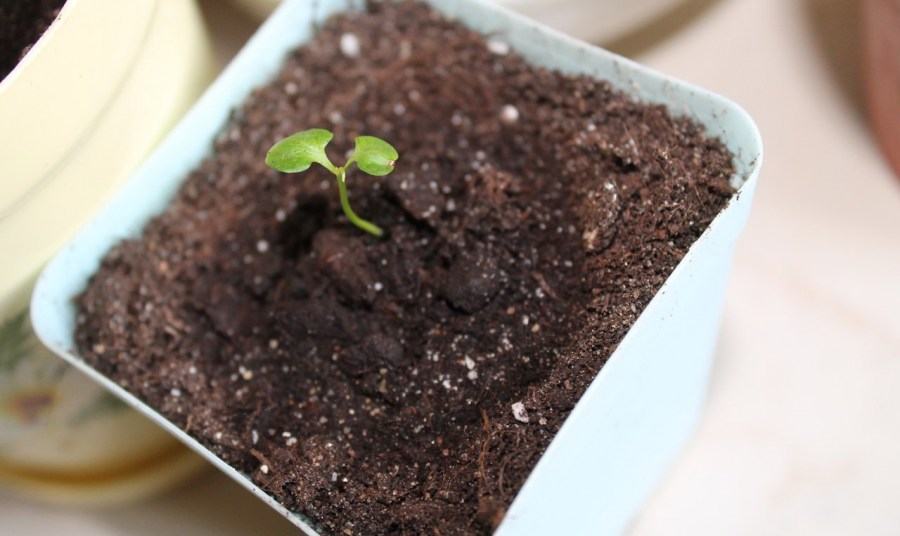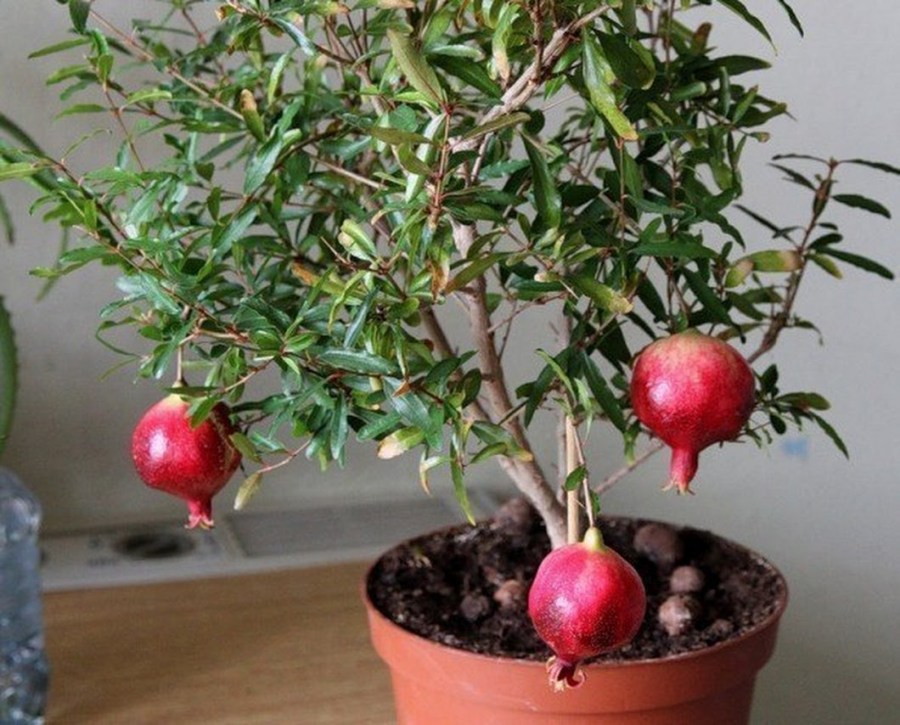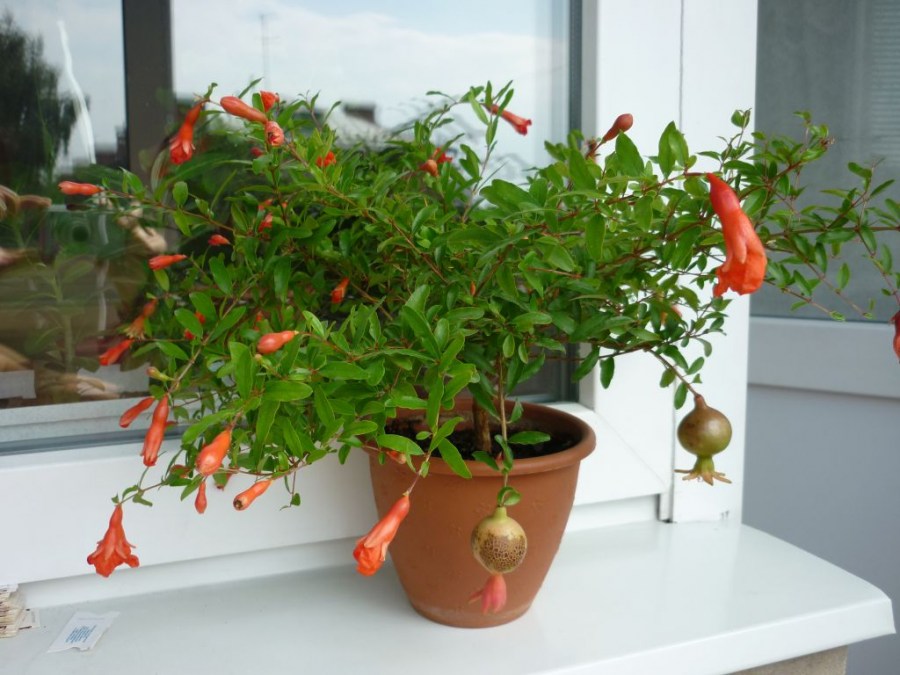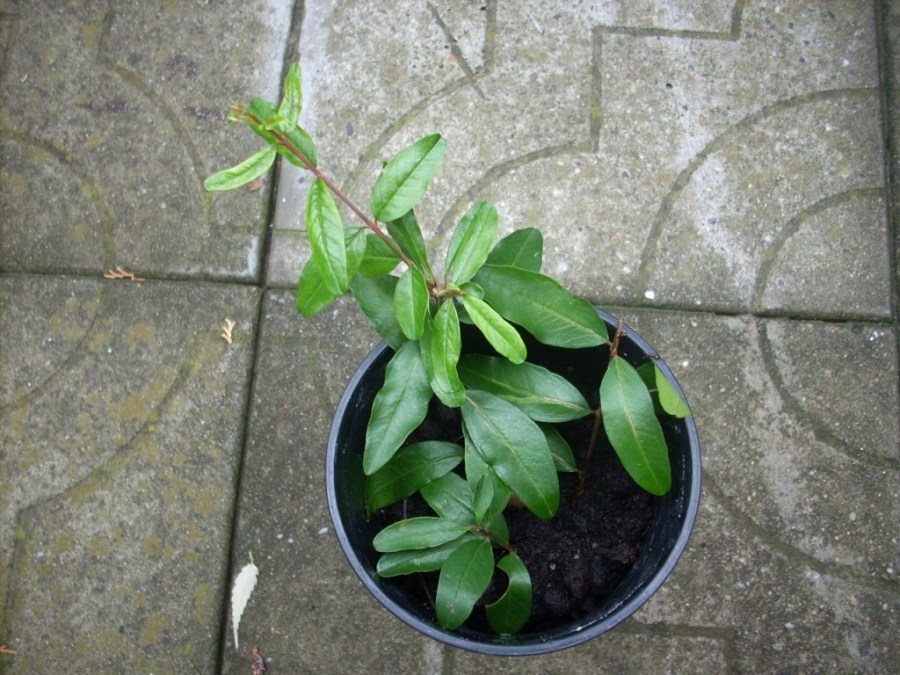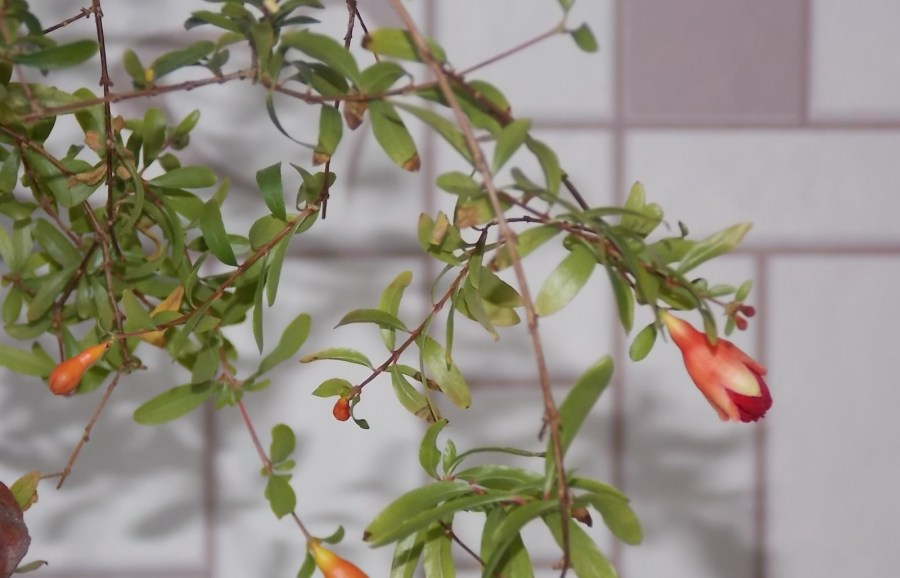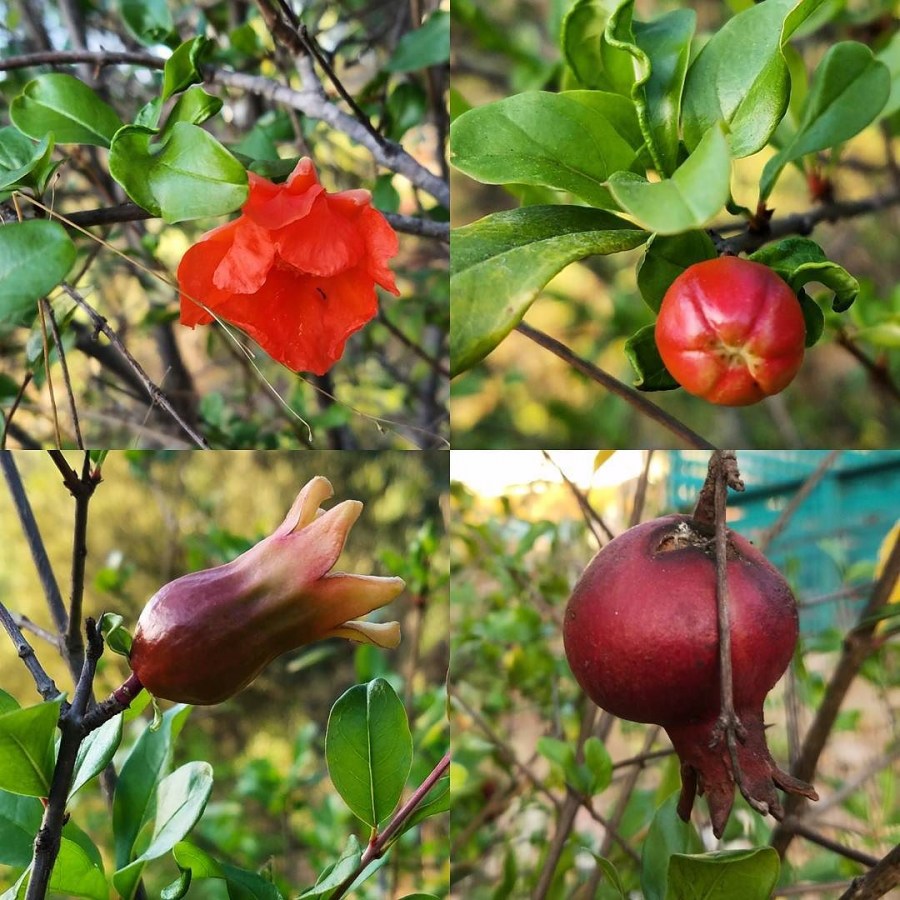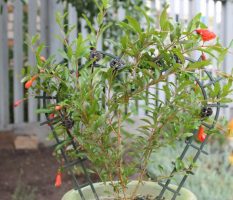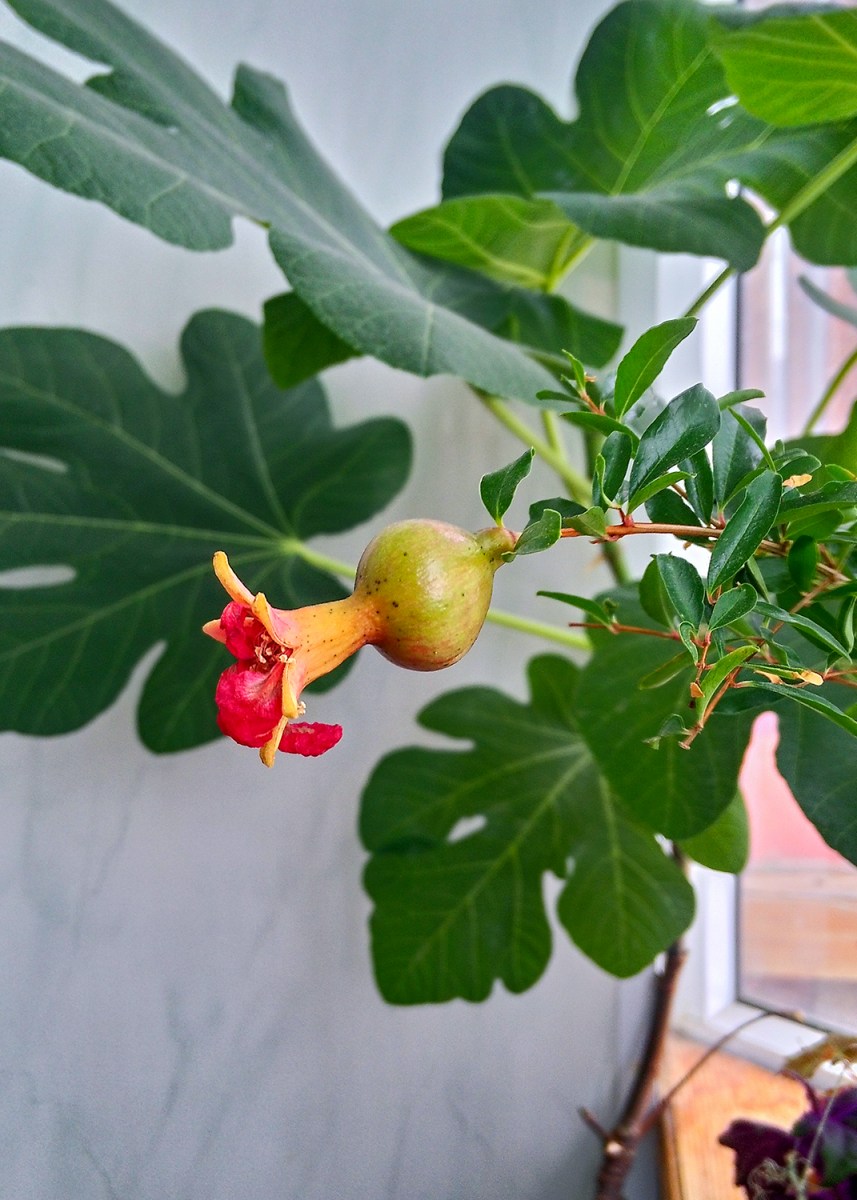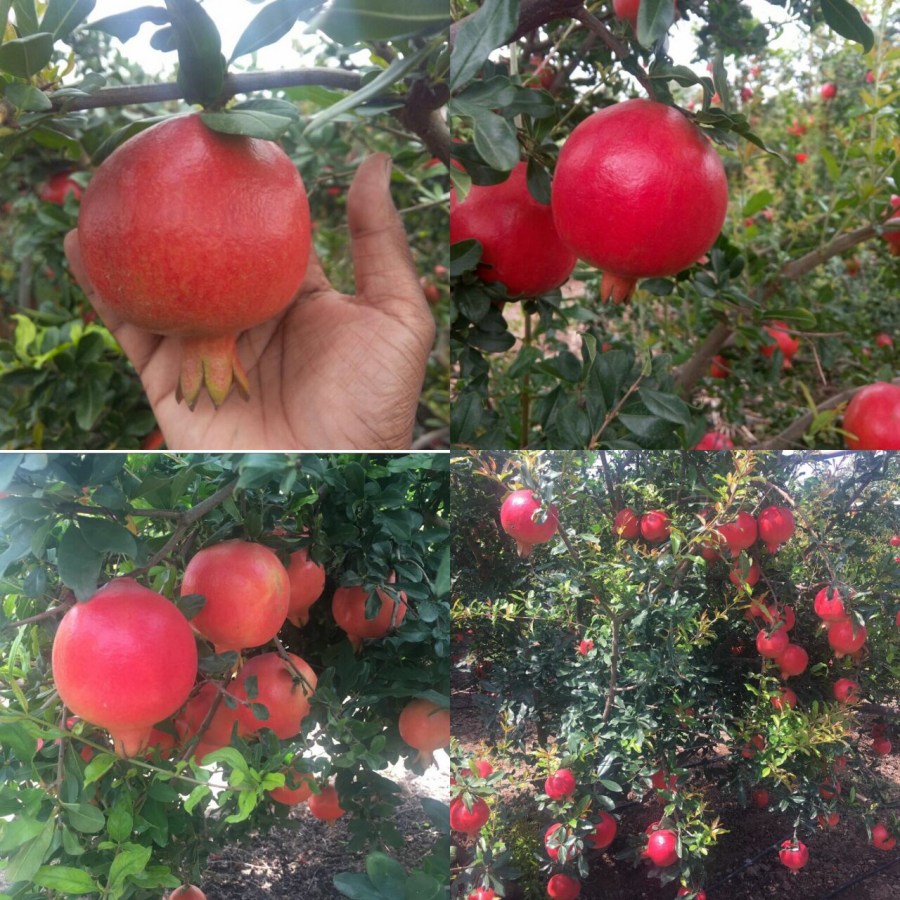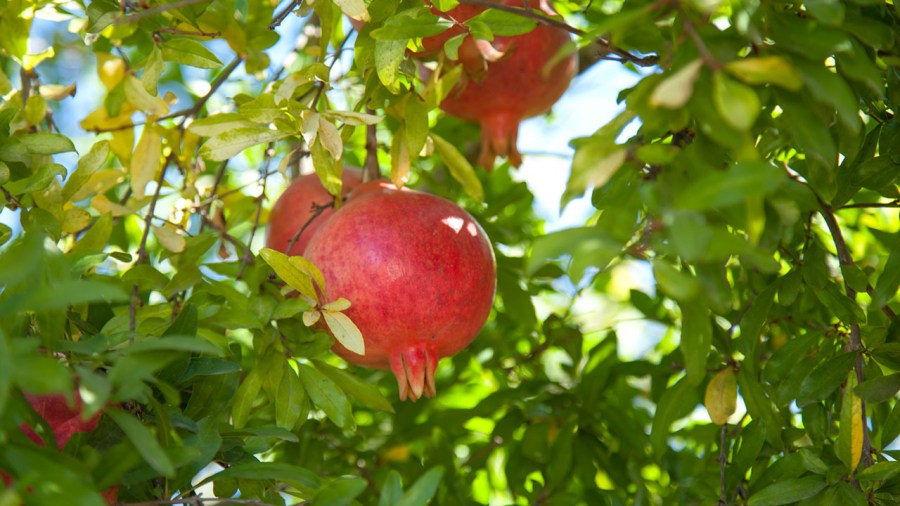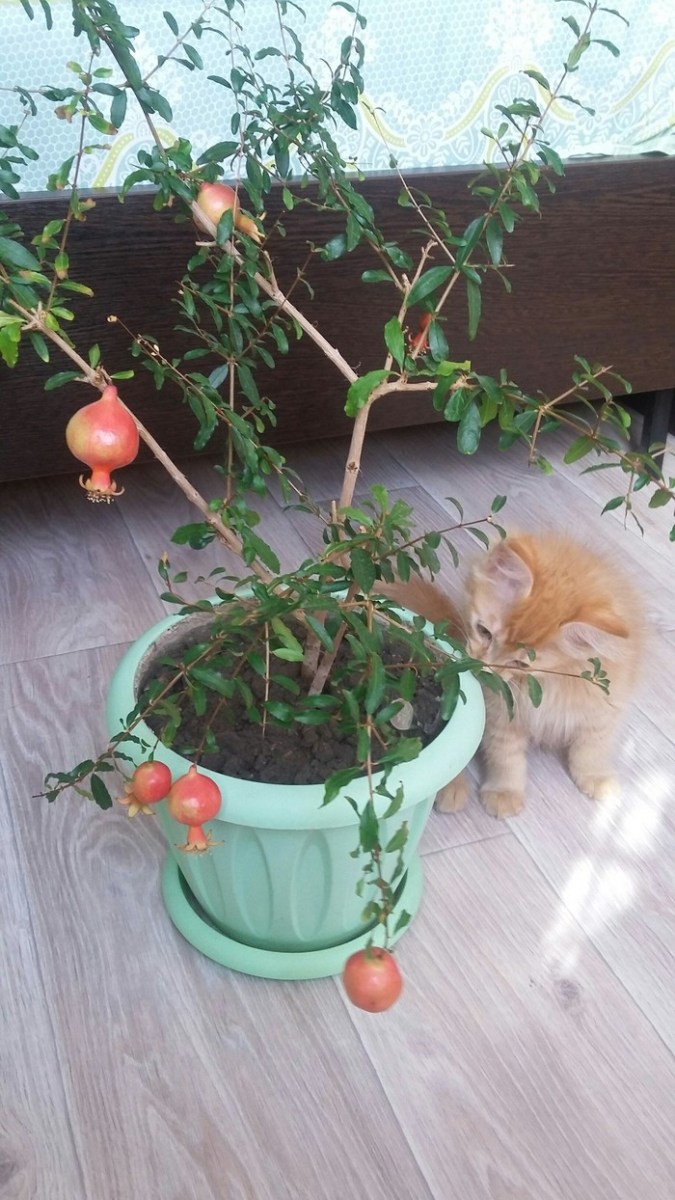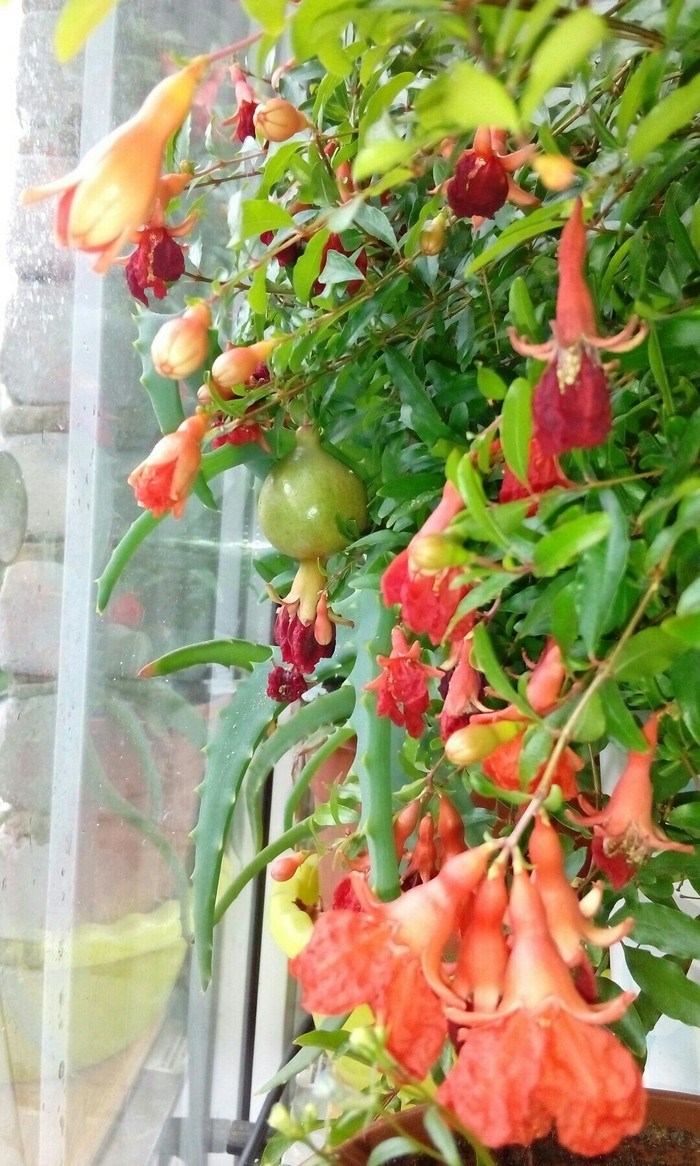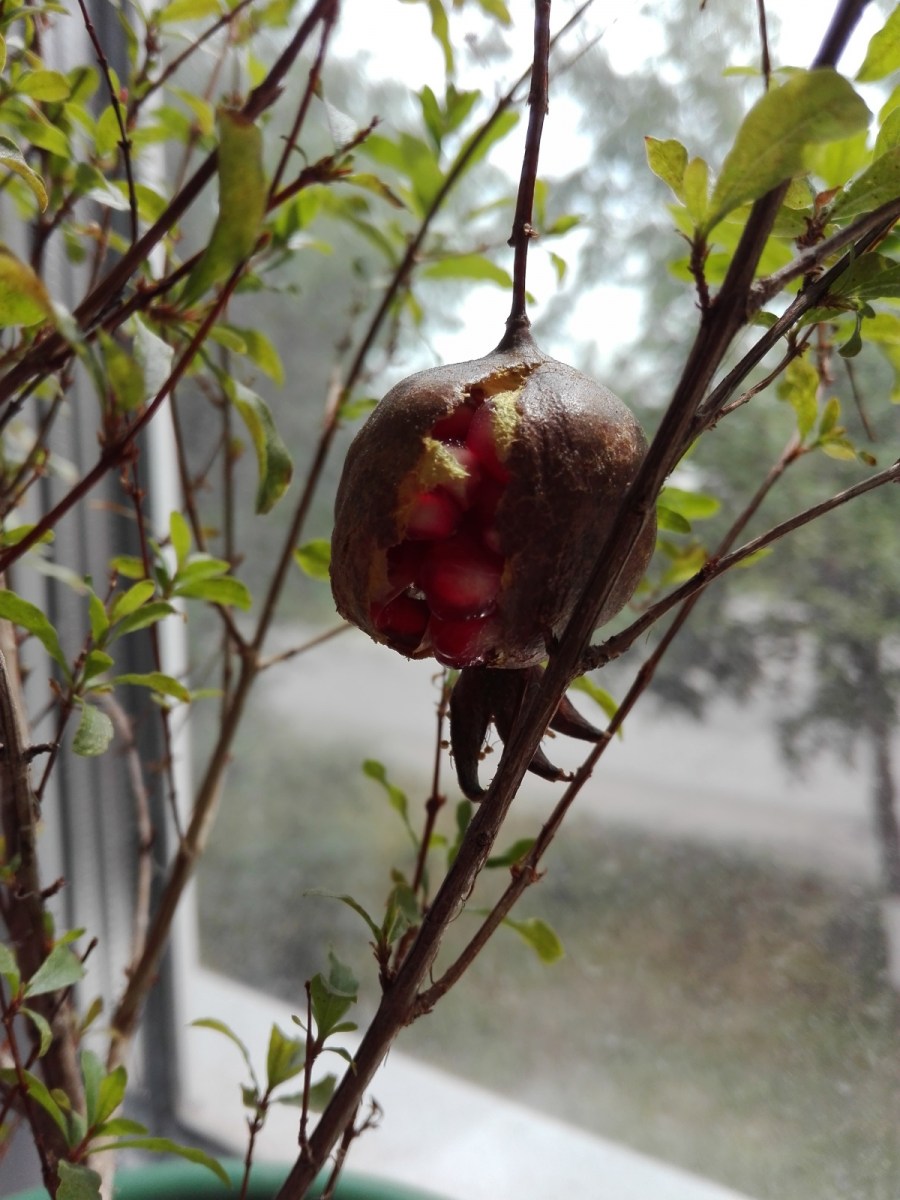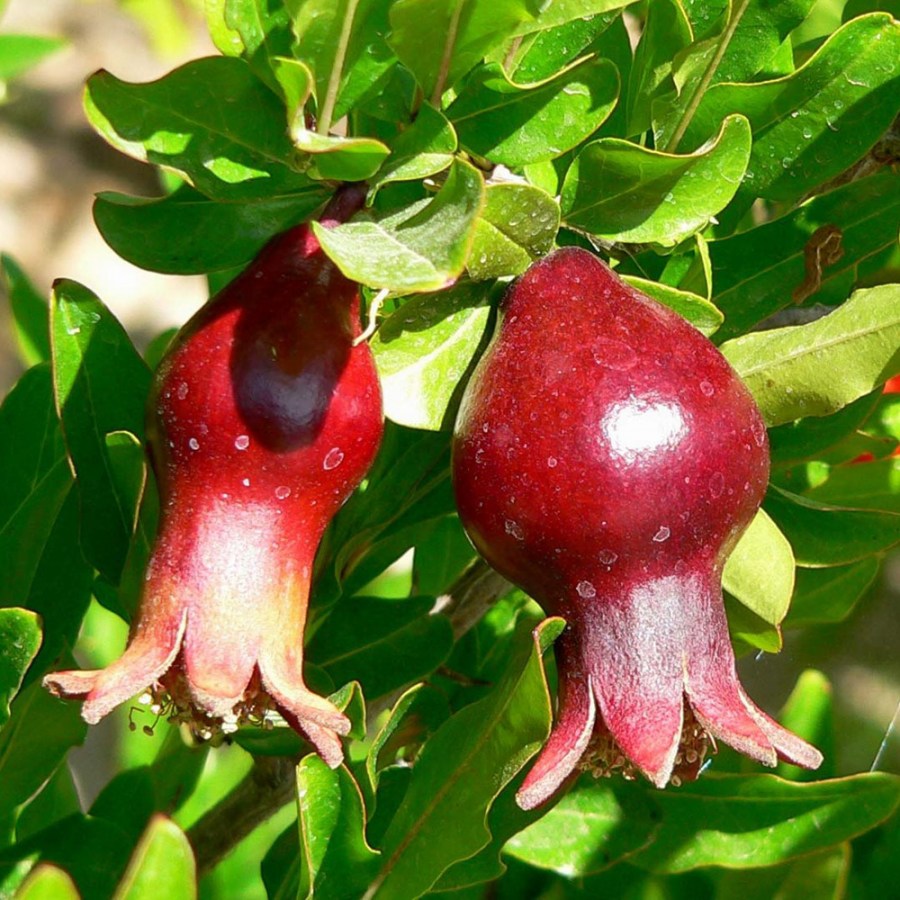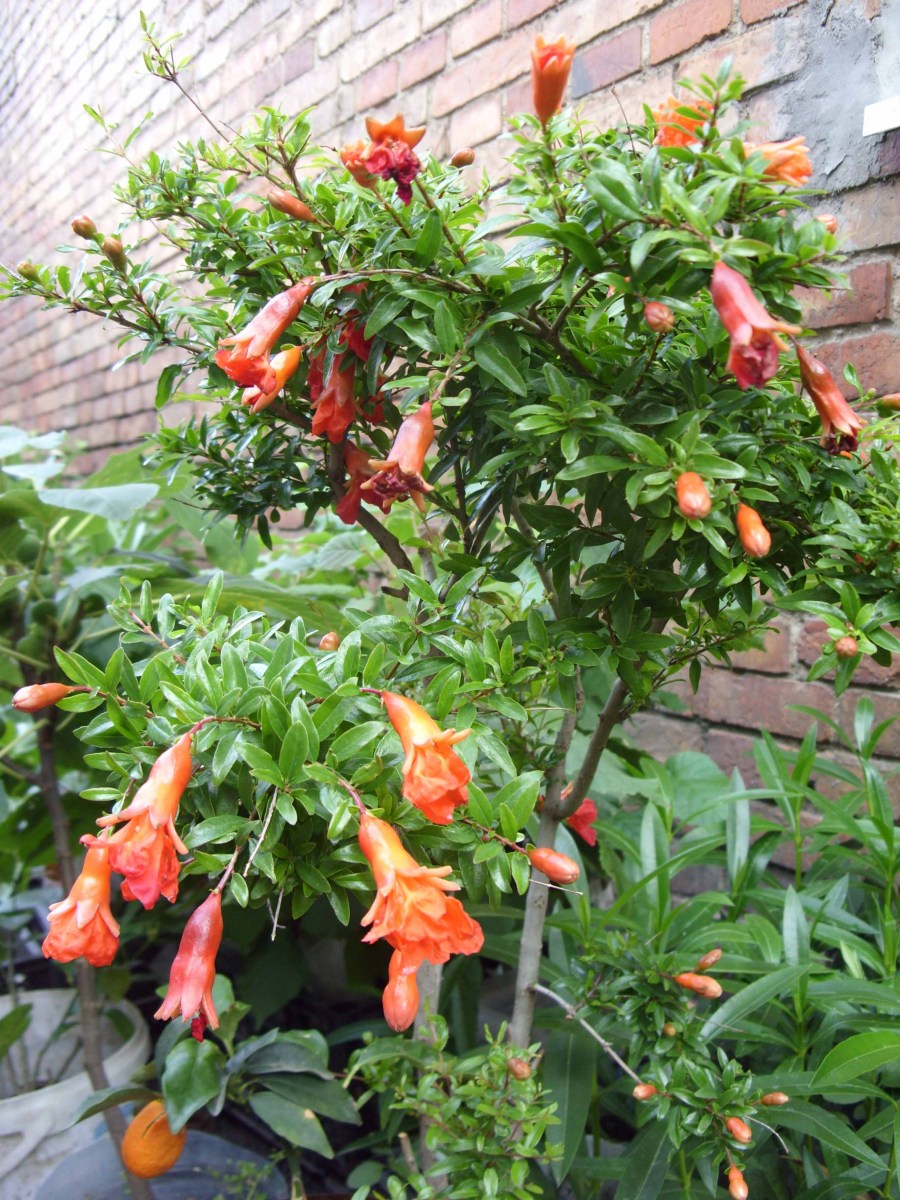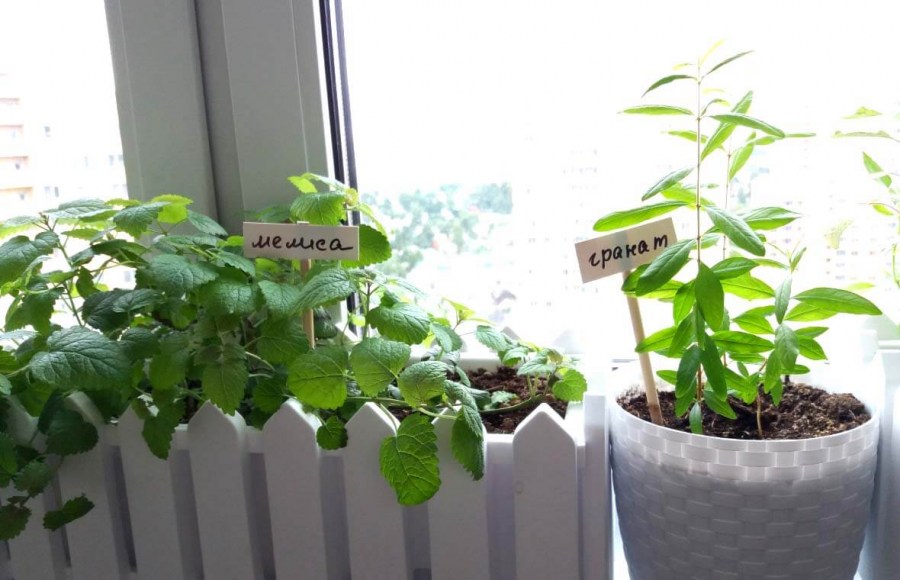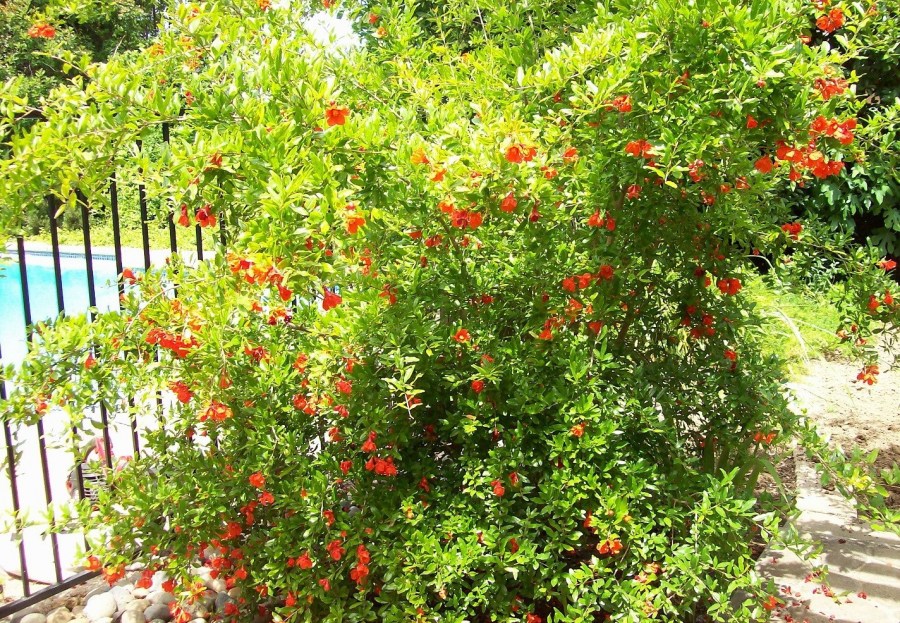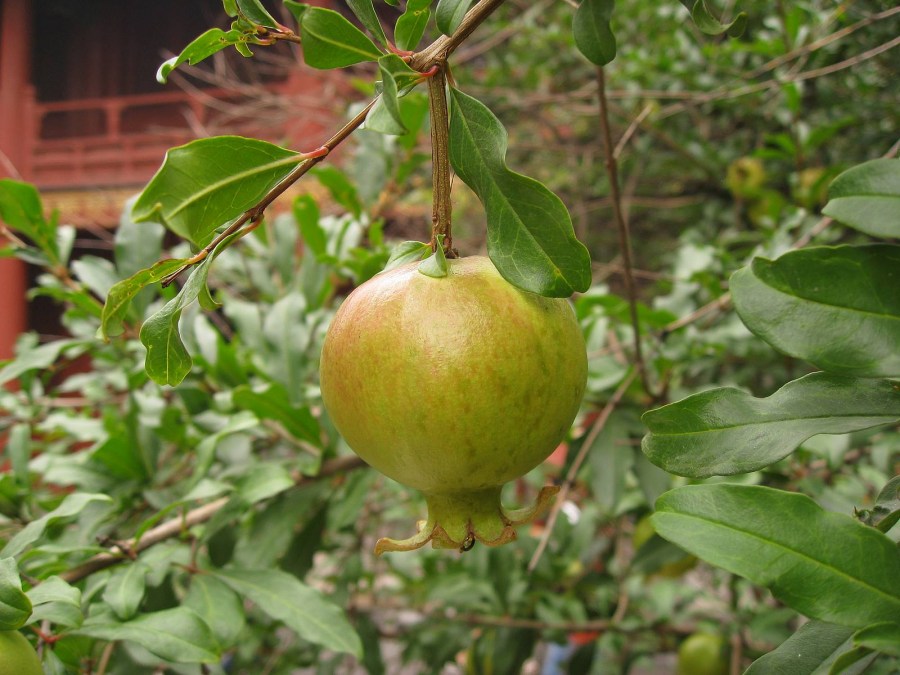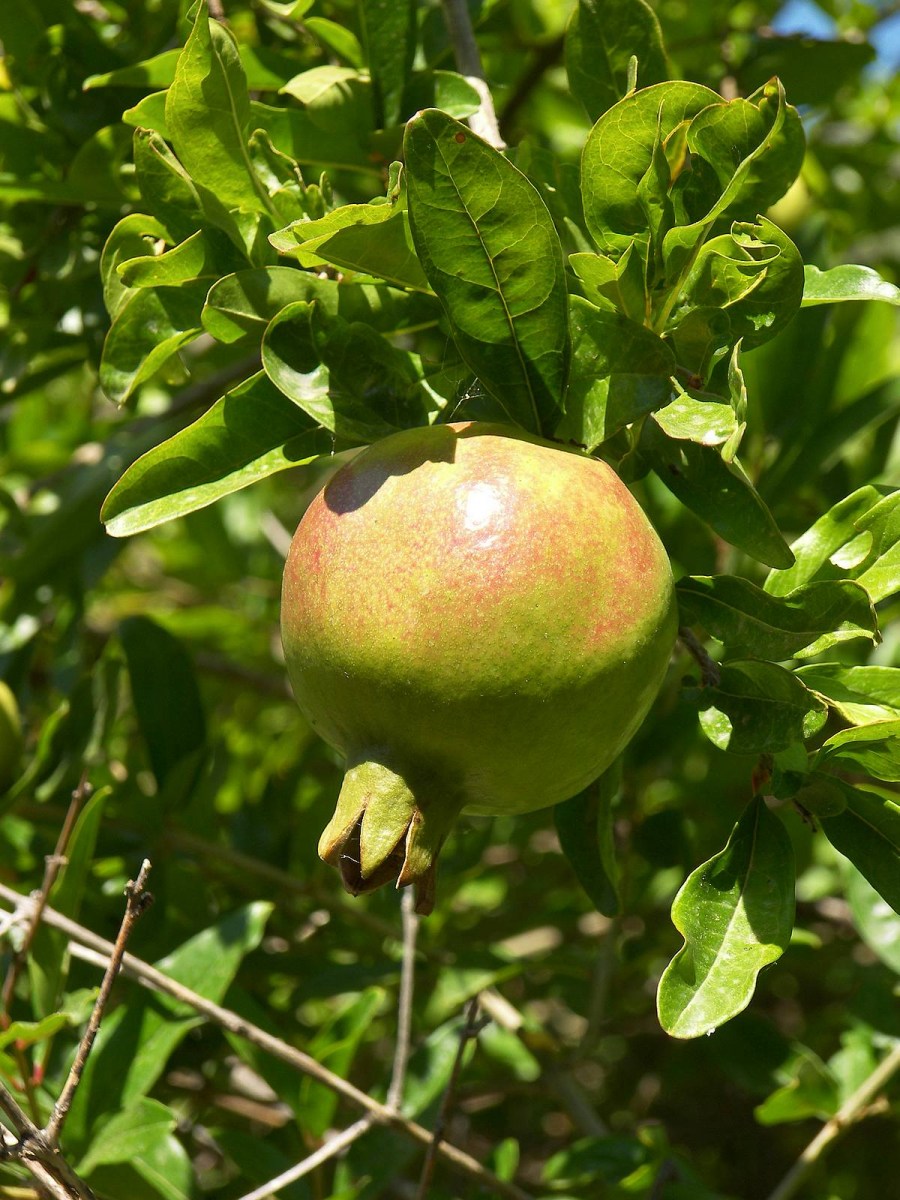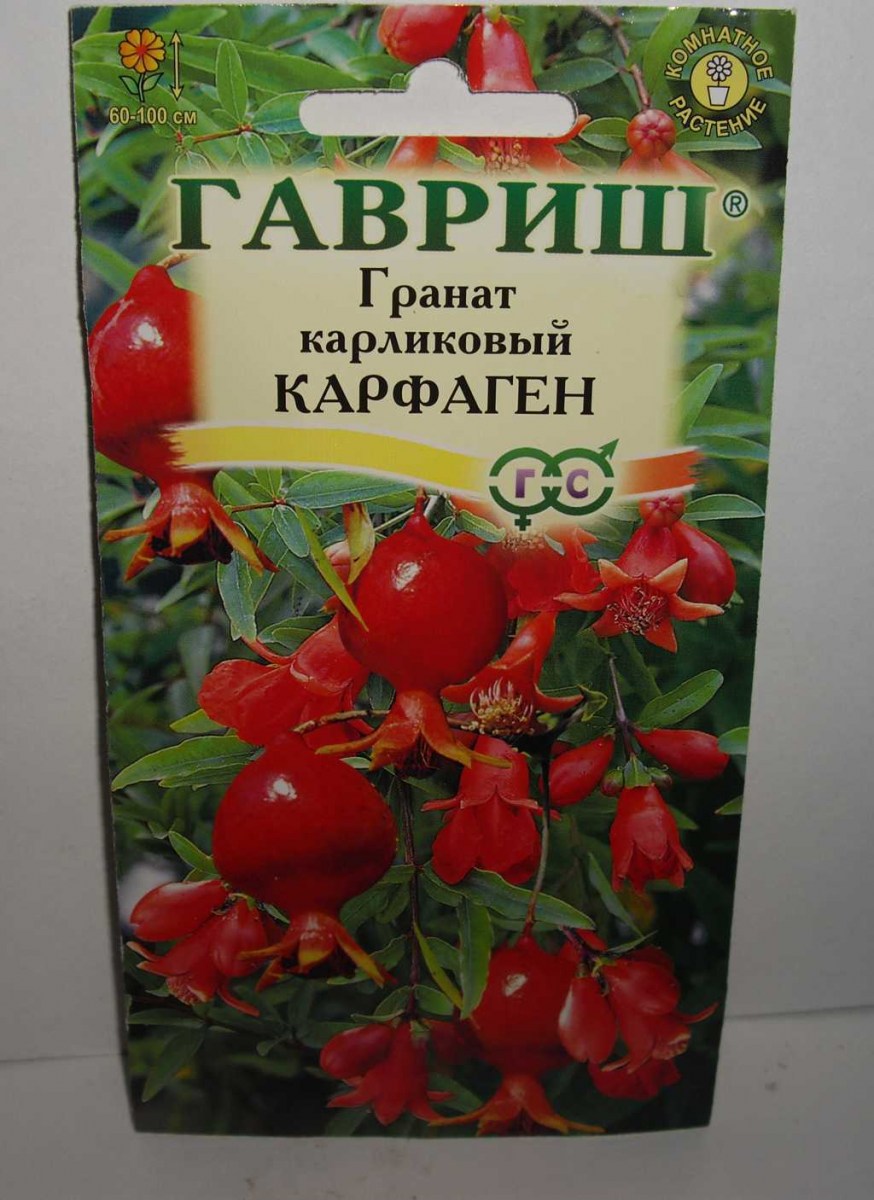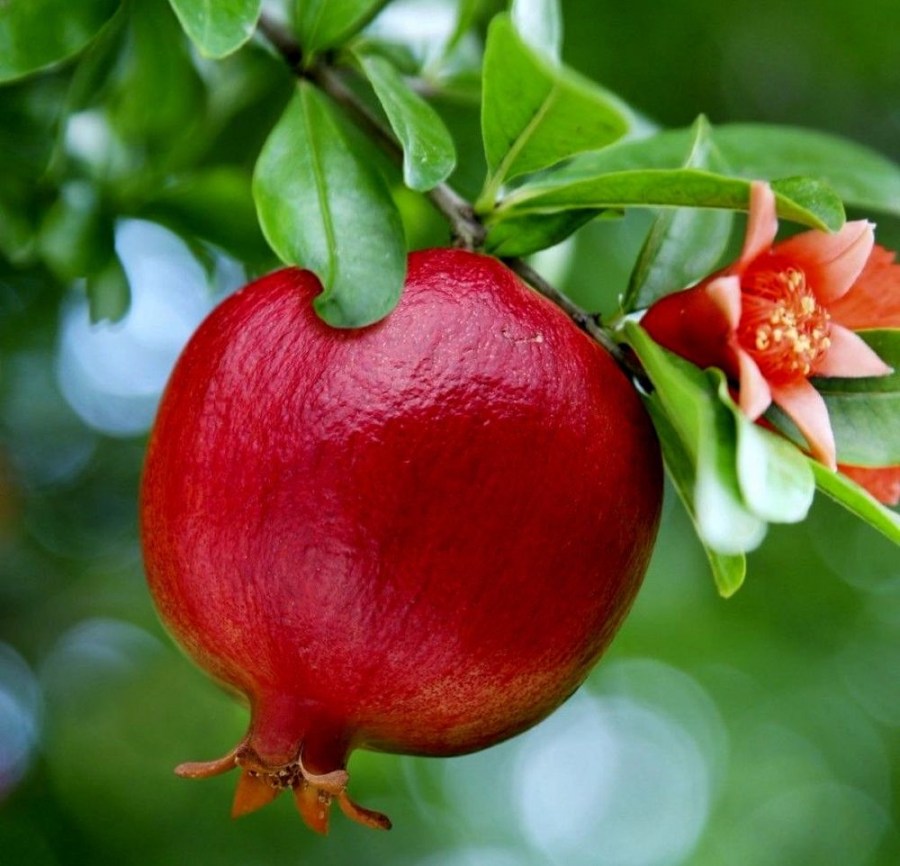Pomegranate tree: how to grow at home? Plant features, species, care and beneficial properties (90 photos)
With the onset of winter, pomegranate fruits appear on our shelves. Many of them love him. You quite possibly saw a photo of a pomegranate tree and would like to have it at home? Surely it was interesting to you, but what will happen if you plant a pomegranate stone at home? Will a tree grow?
In nature, a pomegranate tree can reach 5 to 10 meters in height. At the same time, its harvest is about 60 kg of ripe and tasty fruits. Pomegranate is considered a medicinal fruit - it contains a lot of vitamin C, sugars, citric acid, tannin.
Among fans of growing at home a variety of exotic plants and trees, the dwarf form of the pomegranate tree is known. In height, such trees are not very large - they reach up to 60 centimeters. They look decorative. They bloom beautifully.
Description of pomegranate tree
The homeland of pomegranate is considered the territory of modern Iran. The Spanish conquistadors brought it to the American continent at the end of the 18th century. Sectional photo of ripe pomegranate is more like a scattering of precious stones.
Pomegranate is a deciduous plant. Leaves are opposite, reach a length of up to 7 centimeters. They have an elongated shape, assembled in a group at the base. The flowering period falls in May-August.
The flowers are bright, red-orange in color, quite large. Visually look like a big bell. A flowering pomegranate tree is very beautiful!
Growing pomegranate at home
If you decide to grow a pomegranate tree at home on your windowsill, you should immediately remember that it will not produce edible fruits. The plant will be more decorative than fruit.
To obtain seed, you need to buy a large pomegranate without visible damage to the skin of the fruit. To plant a pomegranate tree you will need a few grains, the rest can be safely eaten.
Peel the seeds from the pulp, rinse well and allow to dry from moisture. You must have hard grains. Their color is more like ivory. Grains of a different color, soft - do not fit.
Dried seeds can be planted. To do this, take a pot (an clay pot will be ideal), fill it with a loose substrate (sand, earth, peat). Do not forget about drainage - the roots of pomegranate do not like too wet ground.
Plant the seeds about one centimeter deep into the pot. Do not forget about the distance between the seeds - they should not be buried in one recess. Pour. You can cover the pot with polyethylene - this is to add moderate humidity on the surface of the soil.
If you did everything right, you had mature and healthy seeds - within two weeks expect the first sprouts. After they grow a little and get stronger, you can remove the polyethylene. If there are weak sprouts in the pot, it is better to remove them immediately.
Pomegranate pot can be rearranged in a well-lit place. The plant requires regular watering. You can use a spray gun for this.
As soon as the sprouts appear leaves - they can be transplanted into separate pots. The soil can be taken universal or made independently. You will need one part of leaf and turf humus, one half of sand and peat.
Since pomegranate has a superficial root system, it grows well in shallow containers. Its main requirement is the availability of good drainage.
If the plant is transplanted into the ground in winter, when there is not enough daylight, take care of additional lighting.If the sprouts lack light they may stop growing.
Every year it is necessary to update the topsoil (top 2-3 centimeters). Plants can be shaped like a bush on a low stem.
Before the buds open, the tree must be trimmed - make a small teething crown. It is necessary to cut out all weak and diseased branches. After five years, all branches older than this age must be completely removed.
Propagation of pomegranate tree by cuttings
Propagation of plants using cuttings is the most common method. With the cuttings, all its genetic material, disease resistance, and crop quality are transmitted to the plant.
To get a good stalk, in the spring you need to choose the middle of the branch, 2 years old, on which there are already at least three buds. The length of the branch should be about 15 centimeters. Place it in water for several days to stimulate root growth.
After soaking, the stalk can be planted in the ground, which will look like a substrate for seeds. About four weeks after planting in the ground, the stalk should have a root system. After a month, the plant is ready for transplantation into a larger pot.
The soil should be selected sandy for an adult tree. After it has fully consolidated and its height will be at least 50 centimeters, your pomegranate tree is ready to be planted in open ground or transplanted into a large pot, where it will grow constantly. As you can see, planting a pomegranate tree does not require tremendous effort.
How to care for a pomegranate tree
Pomegranate does not require home care. He is quite unpretentious in leaving, but some basic rules still have to be followed.
The ideal summer temperature for growing pomegranate should not be higher than 25 degrees. In winter, the plant tolerates a temperature of 15 degrees well. When the frost ends, the pot can be moved to the balcony or to the winter garden.
The earth in the pot should not be dry. In summer, watering should be plentiful and frequent. In winter, you need to reduce it a little. Water it exclusively from above.
To obtain fruits (at home they will be mostly decorative), you can feed the plant. Use universal fertilizers about once every two weeks.
During dormancy, the tree will drop its leaves. This is a natural process, so do not be alarmed. To prevent the pomegranate from dropping leaves, you can place it in a warm room. True, this does not affect his growth very well.
After the buds appear on the branches, rearrange the pot with the tree in a brighter time. Increase the amount of watering. All weak shoots will need to be removed. Thus, all healthy branches will receive more nutrients from the earth.
Pomegranate photo
Flower pots: 65 photos of the most amazing design options
Vapor barrier walls - 100 photo examples + step by step instructions for beginners
Dog box - instructions on how to build a house for a dog (120 photos)
Join the discussion:











